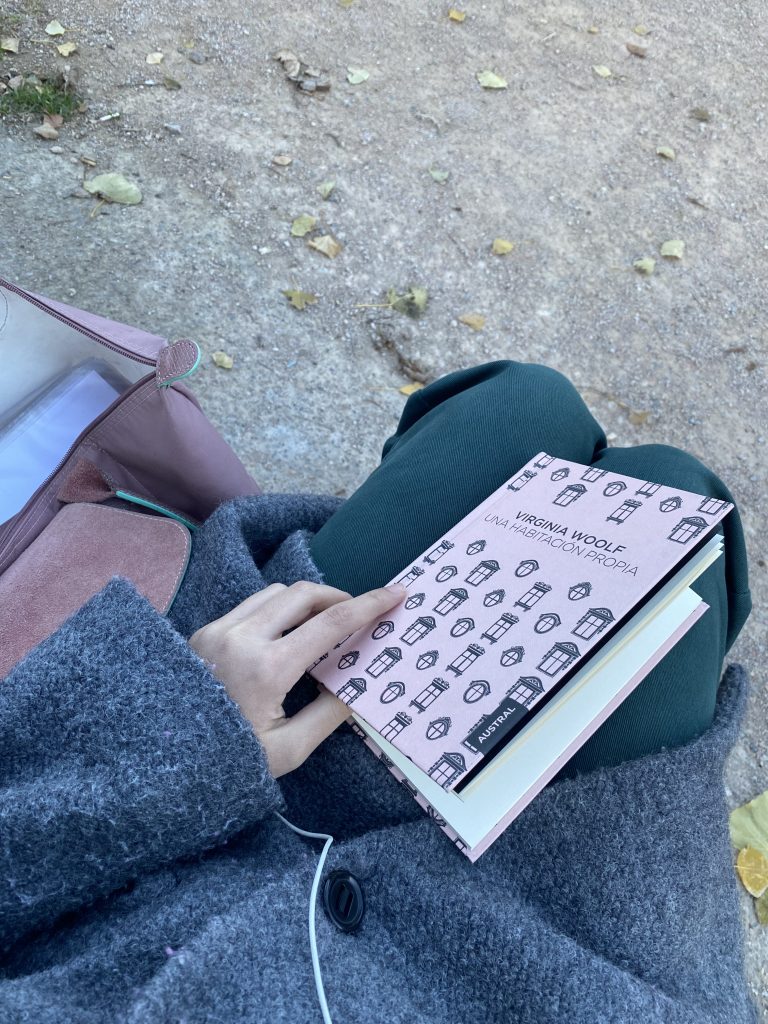
Last november, I was returning home from a normal day of university when I realised that I have forgotten my keys inside my house. The battery of my phone was over so I couldn’t warn anyone. The circunstances led me to only one possibility, wait outside until one of my parents came back from work. I had 6 hours left apron me so I decided to buy a book at my neighbourhood libary and read it laying down at the Jardines of the Rio Turia. One book caught my eye especially. It was not too long and had a interesting name and topic. It was “A room of one’s one” written by the english writer, Virginia Woolf (1882-1941).
She first started writing it to give a lecture to the students of a college. They have had asked her for a lecture on “women and the novel.” Doing her researchs, she realised that she couldn’t work properly as a writer. She couldn’t sit on the grass at a park near the river or enter the library without any male company, these activities were only allowed for men scholars. Ironically, I was reading her at a public green space. Her analysis comes to the conclusion that financial independence and above all, a room of her own, are fundamental in the development of a woman’s career and freedom. Not a living room, not of course the kitchen, rooms where the woman has spent her story, but four walls, in which to be able to think, and write without fear.
During my lecture, I started reflecting about the differentiation of public and private spaces through our european contemporary history. In fact, open and natural spaces are a way to get away from or free ourselves from the theater of everyday life. In addition to allowing you to expand your mind, generate ideas, without so much prejudice. Virginia Woolf enounces that

“freedom lasts as long as it takes a watchman to remember that the use of free spaces is also subject to a spatial hierarchy, in which man -student, teacher- enjoys a greater capacity for use than the women”.
To my surprise, through the book, we can think about actual matter subjects that still have an important effect on our society, such as spatial hierarchy or fight for human rights envolving women. Virginia Woolf handles sensitivity and makes us feel the passage of time in her writings. Time as an architectural element, an aging mechanism. And that sensitivity, that time that passes and grows old reflects the severity and usefulness of architecture. Public spaces to be, private spaces to be. The architectural spaces give importance to privacy needs, framing them in four walls and a door. The private accepts fantasy, whim and exoticism.

At the time where Virginia Woolf wrote, Le Corbusier was the standard in architecture design. Indeed, the Modulor, a measurement system created by Le Corbusier, was based on the body measurements determined by the golden ratio of a french man of 1.83 m. For Le Corbusier, a dwelling was a house for man; and architecture, his partner. The house became a machine for living, where the man was the center of architectural concern, and which, naturally, would be maintained by the woman, in the domestic sense. Therefore, Le Corbusier, design spaces for men. The woman was conspicuous by her absence, or rather she stayed at home, solving domestic needs. It is funny how in this hyperfunctional architecture, where everything has been designed and nothing is left to chance or improvisation, there is no room for the unthought: precisely there is the limit of this exercise where the all-powerful architect believes that he knows everything and can dominate everything, the kitchen remains small.